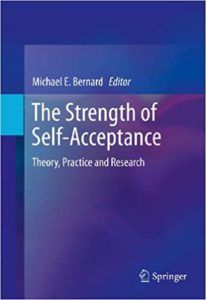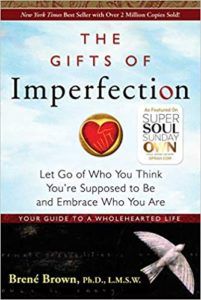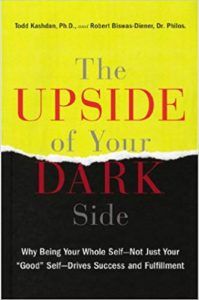16 Self-Acceptance Exercises & Activities for Adults
 We are all only human – beautiful but flawed creatures, simply trying to do our best.
We are all only human – beautiful but flawed creatures, simply trying to do our best.
Yet we too often hold ourselves to impossibly high standards and fiercely judge our failures while overlooking our accomplishments.
Self-acceptance involves taking a compassionate and more loving stance toward ourselves and accepting all parts of the self: the good, the bad… even the ugly.
Read on to learn more about the path to unconditional self-acceptance and how practicing self-compassion can help you to thrive.
Before you continue, we thought you might like to download our three Self-Compassion Exercises for free. These detailed, science-based exercises will not only help you increase the compassion and kindness you show yourself, but also give you the tools to help your clients, students, or employees show more compassion to themselves.
This Article Contains:
What Is Self-Acceptance?
Personality stays the same, and yet it changes over a lifespan. The ebb and flow of human experience come with social challenges and the development of a confident level of self-worth. Self-acceptance is a contributing factor in improved overall psychological wellbeing (MacInnes, 2006).
Self-esteem is more closely associated with psychological affect than self-acceptance. While it is an important piece in the global understanding of an individual, self-esteem alone does not create a psychologically well human being.
Individuals are far too complex to be given a global rating. Humans who don’t rate themselves as either “good” or “bad” have a higher level of psychological wellbeing and move into lives that are flourishing.
Reactions to irrational beliefs result in negative emotions. Those seeking approval in a variety of areas may find discomfort when allowing feedback to fuel a self-rating. The Shortened General Attitude and Belief Scale is a test utilized for people experiencing psychological distress and illuminates the work of irrational beliefs.
Self-acceptance is the ability to see oneself as a whole person with virtues and flaws. It involves valuing the self regardless of accomplishment or failure. It is the ability to effectively learn from mistakes, rather than allowing them to internally disrupt psychological wellbeing.
The ability to accept yourself is essentially permitting yourself to be human. None of us is great at all things. None of us is terrible at all of them, either. Accepting what is, and not rating or self-punishing, is a piece of emotional resilience that will improve wellbeing across ages, cultures, and genders.
Children need interventions in this area of emotional resilience more than most. With social media and society as a whole generating comparison and ratings for everything in their lives, it’s no wonder that rates of anxiety in children are soaring. Parents and teachers have an important role in guiding children toward a growth mindset and how to learn from their mistakes.
Adults modeling self-acceptance are an excellent start to building children’s emotional resilience. Here are a few examples of ways to increase self-acceptance.
5 Ways to Build Self-Acceptance
Start with self-compassion. Kristin Neff’s (2003) research proposes that self-compassion is a healthy form of self-acceptance. When you speak to yourself, imagine you are talking to your best friend. What you say to yourself matters. Self-flagellation is extremely harmful to your psychological wellbeing.
A good place to start practicing self-compassion is with forgiveness. Write yourself a letter to forgive mistakes you’ve made, and forgive yourself for anything you’ve continued to punish yourself for. There are many more ways to work on self-compassion listed on Neff’s website at self-compassion.org.
Learn from mistakes. Failure is a part of success. Adopting a growth mindset when facing errors and mistakes is a powerful place to learn. Understanding neuroplasticity and our ability to change our brains with effort, over time, can be very motivating.
The next time you make a mistake, say to yourself, “How fascinating. What could I have done differently?” Pay attention to the fixed mindsets that are present, as we all have them in different areas. Once you recognize a fixed mindset, you can then make the switch to thinking about learning differently.
Keep a list when you notice self-judgment and self-criticism. In two categories, see how these criticisms can be shifted into acceptance. When you notice the habit, write it down. You may not be able to change in real time until you’ve had the continued practice of doing so.
Healthy risk taking is another way to build self-acceptance. To avoid humiliation, judgment, and negative personal feedback, many people make a conscious choice to “play it safe.” People with solid self-acceptance see opportunity in taking chances on unfamiliar things. What an adventure life can be when you gently nudge yourself in new directions.
Practice unconditional acceptance of others as well. When interacting with others, try to see them as whole beings as well. Permit them to mess things up once in a while too. Most people are just trying to do their best – practice compassion.
6 Useful Tips and Activities

Consider taking a look at the VIA Strengths and qualities that are unique to your personality.
There are many aspects of ourselves that we can’t change. Short people will never be tall, and tall people will never be short. Fully accepting and embracing these qualities as unique gifts helps move you toward self-acceptance. Brown-eyed people will never be blue-eyed people, and that is fine. Letting go of what we cannot change is empowering.
Goal setting can be a helpful activity for self-acceptance. Setting up realistic goals and celebrating when you’ve accomplished those goals is a booster for accepting what you can do with your whole self. Setting small goals and piling bigger goals on them as you progress is a pathway to personal development.
Find support in your daily life. You have fans. Embrace their helpful positivity and let their kindness fuel your positivity ratio. Every human can benefit from more positivity (Fredrickson, 2009). When positivity outweighs negativity, people can move toward lives that are flourishing.
Be mindful of perspective. Shift your thoughts to where a person is coming from when receiving feedback, whether positive or negative. A full view or bigger picture can then be obtained. If the focus remains inward only, emotional response will dictate behavior more than rational thought.
Popular Books on the Topic
1. The Strength of Self-Acceptance: Theory, Practice and Research

This book is incredibly useful to help others build self-acceptance. Backed by in-depth science, the book is a must-have for practitioners.
Available on Amazon.
2. The Gifts of Imperfection: Let Go of Who You Think You’re Supposed to Be and Embrace Who You Are

Brown’s work on shame and vulnerability continues to mesmerize readers and motivate them to receive life wholeheartedly.
It has helped many overcome “should” thinking and replace it with accepting who they truly are.
Available on Amazon.
3. Radical Acceptance: Embracing Your Life with the Heart of a Buddha

Brach’s years of work illuminate insight into the spiritual growth of readers.
This book seeks to help readers end suffering by removing the outlook of personal unworthiness.
Available on Amazon.
4. The Upside of Your Dark Side: Why Being Your Whole Self – Not Just Your “Good” Self – Drives Success and Fulfillment

The book embraces the emotional agility it takes for self-motivation and full acceptance of the human experience. Negative happens, but it’s how we perceive the negative that matters.
Available on Amazon.
Find a list of the best self-compassion books here.
A Note on Teaching Self-Acceptance in Schools
Kids are under a great deal of pressure. Self-judgment, peer judgment, parent judgment, societal judgment… it is overwhelming, negative, and having a massive impact on our youth. Education is not a one-size-fits-all situation, and teaching kids self-acceptance should be part of the tapestry for teaching in all grades.
Many of us have heard the messaging that we’ll be losers or failures if we don’t excel. This route works for some. For others, getting stuck in a wheel of high achievement leaves them flat when they realize they’ve never learned self-acceptance.
Helping kids get into a true growth mindset will help them to realize that they are great in their unique way. Showing kids their strengths, guiding them on a pathway that maximizes those strengths, and helping them to accept their flaws will fuel resilience.
There is a noted difference in the attribution of a failure between males and females (Dweck & Gilliard, 1975). Boys tend to attribute failure to a lack of effort, whereas girls tend to attribute failure to lack of ability. This leads to the importance of teaching girls self-acceptance, though everyone will benefit from the message.
Teachers should create classrooms that embrace mistakes. When failure is an effective place to learn, less anxiety and self-judgment will be present in the classroom. When teachers offer ways for children to express their emotions fully, they are better able to bounce back from setbacks. They are also more likely to communicate with others effectively.
Guiding kids in having less judgment toward themselves and others is a helpful note to bring into the classroom. Teaching kindness and compassion to replace judgment helps every student show up as their best selves. Celebrating strengths and acts of kindness can help kids move into a different mindset when interacting with their peers.
5 Exercises for Students

- Start the day with a positive mindset, holding yourself in high regard and knowing that no matter what happens, you will accept yourself.
- Pat yourself on the back when you have completed something difficult. Do not take yourself for granted!
- Have a positive and open attitude about change.
- Think back to the last time you succeeded at doing something hard and remind yourself: “I’ve done hard things before; I can do this now!”
Self-acceptance self-talk is a great way to help students increase their self-acceptance. Here are a few examples.
- “No matter what, I accept my whole self.”
- “It’s usually nicer to be liked by others, but I can accept myself even when facing criticism.”
- “I accept who I am, even though I may not like some of my traits or behaviors.”
- “My performance at school, perfect or otherwise, does not determine my worth as a person.”
Perfectionism leads to burnout. It would be awfully crowded at the top if everyone was the best. Self-acceptance of personal abilities reduces chronic stress. An interesting study in the UK (Jowett, Hill, Hall, & Curran, 2016) on elite soccer players showed the importance of self-set achievement standards. When the pressure to perform is weaved with self-worth, the failure to achieve leads to depression, anxiety, and burnout.
Utilizing open-ended questions is a great way to ensure that the drive to achieve is intrinsically motivated. Coaches, teachers, and parents using this exercise can come to a deeper understanding of the child’s experience. You’ll know how committed they are to their personal achievement. You’ll help them avoid burnout by reducing extrinsic pressure to achieve.
For younger children, the Cool Corgi story is a great way to teach an impactful lesson about self-acceptance.
Once the story has been read aloud to the students, follow it with these questions. Emphasize the lesson of self-acceptance, which means accepting both positive and negative qualities.
About the story:
- What did Rusty like about himself?
- What didn’t Rusty like about himself?
- What did Mama Corgi suggest about accepting himself?
Make it personal:
- What are some things that you like about yourself?
- Is there anything you would like to change?
- If there are things that you don’t like about yourself, does that make you unlikable?
- What things can you tell yourself when you’re acting like Rusty?
A powerful lesson for kids of all ages is countering self-downing. This is a habitual pattern of thinking that happens when facing adverse events (e.g., humiliation, rejection, failure). A natural instinct for children is to think, “Because I failed, I’m a loser, or I’m a failure,” when encountering negative events.
To help kids avoid their own negativity bias, you can help them set a new path toward self-acceptance by adopting new thinking habits through choice.
Start the lesson by having the kids close their eyes and ask them to raise their hands if the following question applies to them: “How many of you have made a mistake in your lifetime?” If you don’t have a smart aleck in the group, all hands will be up. Have them open their eyes to notice that all humans make mistakes.
Have them close their eyes again and ask, “How many of you enjoy feeling down?” You should have no hands raised. Again have them open their eyes and look around.
Explain what self-acceptance means. Explain that your lesson is about having confidence, even when having a rough day.
Step one
Have the group come up with a definition of confidence (e.g., not being afraid to fail, not judging oneself harshly, having self-trust that success is possible). Have kids self-identify their positive and not-so-awesome characteristics.
Step two
Reinforce the fact that positive characteristics do not get erased when something negative happens. Describe an emotional scale and degrees of feelings. Using a bit of humor, come up with a scenario that made you feel down (e.g., “I got called a jerk by four students this morning, and that made me feel…”).
When you attach negativity to your character after something bad happens, the result is feeling down. The scale gives you a measure of how far down the feelings have gone, the bottom being a loss of confidence.
Have kids create three separate lists:
The first is what happened (examples of negative scenarios).
The second is what they were thinking about themselves immediately afterward (e.g., “I’m dumb,” “I’m a failure,” etc.).
The third is giving the “feeling down” a measure from the scale.
The purpose is to show them that thinking about their whole self and allowing the loss of confidence can be countered.
Step three
Hopelessness doesn’t make logical sense just because not-so-awesome characteristics are present. Our whole selves require both the positive and not-so-awesome. Self-acceptance requires both.
Explain the complexity of the whole self. Replacing irrational, negative thoughts is hard work but results in increased confidence. Have the kids fill in the blanks in the following questions for themselves. Instruct them that “I don’t know” and “nothing” or any derivation thereof are not acceptable answers.
I am good at…
I could use some improvement in…
One of the best things about me is…
One thing I would like to change about myself is…
Other people tell me I’m good at…
Other people say I need to improve at…
One very good thing I’ve done is…
One mistake I’ve made is…
Step four
Have kids develop a radar for self-downing and an antidote for when they notice it occurring.
“Even though that thing happened, I am still capable and likable because…”
PositivePsychology.com Resources
Here we share different ways to increase self-acceptance. It’s adaptable for adults and children. Applying this useful information helps improves confidence.
My Personal Beliefs explores ten questions for self-appraisal, with reflection questions providing further guidance and insights
At times when self-acceptance extends to the world around you, the Control-Influence-Accept Model guides you to assess situations. Based on whether or not you can control or influence these, you are encouraged to accept things as they are.
Dumbstruck for ideas on positive qualities you might have but don’t realise you have? Then read this My Positive Qualities group worksheet, which can be a very revealing and encouraging exercise.
In addition, The Science of Self-Acceptance Coaching Masterclass introduces a new, science-based method for understanding and applying positive psychology to effectively help people create a more accepting and satisfying relationship with themselves.
If you’re looking for more science-based ways to help others develop self-compassion, this collection contains 17 validated self-compassion tools for practitioners. Use them to help others create a kinder and more nurturing relationship with the self.
A Take-Home Message
Self-acceptance is freedom from suffering. Giving yourself the full and unconditional permission to be human opens you up to thoughts and feelings as adventures, rather than self-punishing patterns.
Irrational thoughts and cognitive distortions are limiting to personal development and achievement of the good life.
Thanks for reading!
We hope you found this article useful. Don’t forget to download our three Self-Compassion Exercises for free.
- Bernard, M. E. (Ed.). (2013). The strength of self-acceptance: Theory, practice, and research. Springer Science & Business Media
- Brach, T. (2004). Radical acceptance: Embracing your life with the heart of a Buddha. Bantam.
- Brown, B. (2010). The gifts of imperfection: Let go of who you think you’re supposed to be and embrace who you are. Hazelden.
- Dweck, C. S., & Gilliard, D. (1975). Expectancy statements as determinants of reactions to failure: Sex differences in persistence and expectancy change. Journal of Personality and Social Psychology, 32(6), 1077–1084.
- Fredrickson, B. (2009). Positivity. Random House.
- Jowett, G. E., Hill, A. P., Hall, H. K., & Curran, T. (2016). Perfectionism, burnout and engagement in youth sport: The mediating role of basic psychological needs. Psychology of Sport and Exercise, 24, 18–26.
- Kashdan, T., & Biswas-Diener, R. (2015). The upside of your dark side: Why being your whole self – not just your “good” self – drives success and fulfillment. Plume.
- MacInnes, D. L. (2006). Self-esteem and self-acceptance: An examination into their relationship and their effect on psychological health. Journal of Psychiatric and Mental Health Nursing, 13(5), 483–489.
- Neff, K. D. (2003). Self-compassion: An alternative conceptualization of a healthy attitude toward oneself. Self and Identity, 2, 85–102.
Let us know your thoughts
Read other articles by their category
- Body & Brain (49)
- Coaching & Application (57)
- Compassion (26)
- Counseling (51)
- Emotional Intelligence (24)
- Gratitude (18)
- Grief & Bereavement (21)
- Happiness & SWB (40)
- Meaning & Values (26)
- Meditation (20)
- Mindfulness (45)
- Motivation & Goals (45)
- Optimism & Mindset (34)
- Positive CBT (29)
- Positive Communication (20)
- Positive Education (47)
- Positive Emotions (32)
- Positive Leadership (18)
- Positive Parenting (4)
- Positive Psychology (33)
- Positive Workplace (37)
- Productivity (17)
- Relationships (46)
- Resilience & Coping (36)
- Self Awareness (21)
- Self Esteem (38)
- Strengths & Virtues (32)
- Stress & Burnout Prevention (34)
- Theory & Books (46)
- Therapy Exercises (37)
- Types of Therapy (64)






What our readers think
Really well written and helpful, integrating positive psychology tools and coaching.
this a very simplified relatable article that inspire me to practice self acceptance in way that I can understand and does make sense to me. thank you